Conchita, I made a great discovery today. I had
been thinking about this a while. It is a momumental
discovery.
I will talk about it in a sec. In the meantime take
a look at what follows. Most of these are
runners-up to the last batch, which is
going through coating processes.
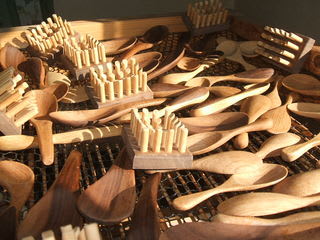
Most of these are Chinese spoons with short stemmes
plus small salt spoons. The significance of this photo
is that two different bacthes are simultaneously
being coated UPON SOUND DRYING.

Here above, you are looking at another of my
trimmers. Today's discovery centres around this.
This is a very expensive trimmer, costing twice
as much as those you will see shortly. Expensive,
because it has a nasty electronic circuit
built in it so that it starts slow and gradually
runs up to its maximum rotation at something like
12,000 rpm.
At this rotational speed the Joule heating due
to friction is so much, that it leaves burn marks.
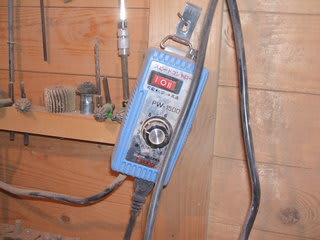
That is precisely why I bought this speed controller.
One added bonus is that you do not want expensive
trimmers. All you want is those with simple
carbon brush contacts.

These two here above are those I am talking about.
Typically, they can be had for JPY6,000.
It all started with the opetional time limit for the one
on the right. Compared to the one on the left
this seemd to reach its operational limit
much quicker. The reason is much too obvious.
The torque at low rotational speeds is smaller.
So, you tend to pushi it against the work harder.
Yes, it is a vicious circle. My thinking, therefore,
was what if I used my expensive trimmer at its
regular rotational speed.

To put it in a nutshell, it worked. Burn marks
can be dealt with, my thought...
In fact, the cutting or sanding power with my
SPIKY was staggering. It was just like scooping
cream with a spoon! You might need a bit of a time scale.
If you use a reduced speed bit my guestimate of the
time for this large cavity is 10 minutes. With the
discovery it is down to something like 5 minutes.
You may wonder why not 2,3 minutes. The anser is this.
It is so fast removing the mass you must be careful
in applying the pressure. As I get more used to
this huge abrasive power I can do better, I think.
There is more to this than just that. Almost
certainly because of its abrasive power abrasion is
isotropic! You do not worry about the direction
in which you are pointing the bit. Can you
top that!?
Yes, on reflection I have come a long way.
Here I am, though, finding myself in a totally
new realm of abrasive power. I just feel like
crying on your shoulder, Conchita.

Today's session end ed with shaping up the templates
for the deep cavity table ladles. I am dead certain
that the new discovery will also work wonder
with deep concave surfaces!



been thinking about this a while. It is a momumental
discovery.
I will talk about it in a sec. In the meantime take
a look at what follows. Most of these are
runners-up to the last batch, which is
going through coating processes.

Most of these are Chinese spoons with short stemmes
plus small salt spoons. The significance of this photo
is that two different bacthes are simultaneously
being coated UPON SOUND DRYING.

Here above, you are looking at another of my
trimmers. Today's discovery centres around this.
This is a very expensive trimmer, costing twice
as much as those you will see shortly. Expensive,
because it has a nasty electronic circuit
built in it so that it starts slow and gradually
runs up to its maximum rotation at something like
12,000 rpm.
At this rotational speed the Joule heating due
to friction is so much, that it leaves burn marks.

That is precisely why I bought this speed controller.
One added bonus is that you do not want expensive
trimmers. All you want is those with simple
carbon brush contacts.

These two here above are those I am talking about.
Typically, they can be had for JPY6,000.
It all started with the opetional time limit for the one
on the right. Compared to the one on the left
this seemd to reach its operational limit
much quicker. The reason is much too obvious.
The torque at low rotational speeds is smaller.
So, you tend to pushi it against the work harder.
Yes, it is a vicious circle. My thinking, therefore,
was what if I used my expensive trimmer at its
regular rotational speed.

To put it in a nutshell, it worked. Burn marks
can be dealt with, my thought...
In fact, the cutting or sanding power with my
SPIKY was staggering. It was just like scooping
cream with a spoon! You might need a bit of a time scale.
If you use a reduced speed bit my guestimate of the
time for this large cavity is 10 minutes. With the
discovery it is down to something like 5 minutes.
You may wonder why not 2,3 minutes. The anser is this.
It is so fast removing the mass you must be careful
in applying the pressure. As I get more used to
this huge abrasive power I can do better, I think.
There is more to this than just that. Almost
certainly because of its abrasive power abrasion is
isotropic! You do not worry about the direction
in which you are pointing the bit. Can you
top that!?
Yes, on reflection I have come a long way.
Here I am, though, finding myself in a totally
new realm of abrasive power. I just feel like
crying on your shoulder, Conchita.

Today's session end ed with shaping up the templates
for the deep cavity table ladles. I am dead certain
that the new discovery will also work wonder
with deep concave surfaces!















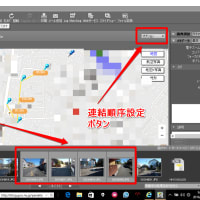
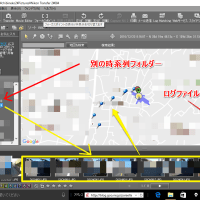
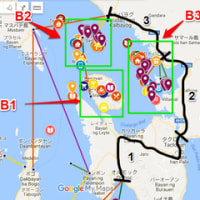





※コメント投稿者のブログIDはブログ作成者のみに通知されます